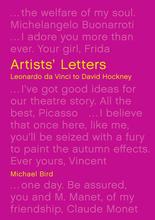More about Vanessa Bell
- All
- Info
- Shop
Works by Vanessa Bell

Contributor
The biography of Vanessa Bell is inextricably linked to her sister, the great novelist Virginia Woolf, as well as the other members of the Bloomsbury Group, including E.M. Forster and John Maynard Keynes.
The relationships between the members of the Group, the cross-fertilization of ideas and genes, and the radical sensibility of its members, combined with their idea of "civilizing the mind" while seeking pleasure beyond monogamy, made them a kind of scholarly, high-brow model for the "Warhol crowd" of the 1950's-1980's and left a major impact on poetry, art, economics and policy. Also, both Woolf and Warhol were obsessed with Proust.
There are critics who argue that biography as a genre is incoherent or irrelevant to the work of an artist, but in Bell's case, her family and intimate relationships are such a critical part of her work and the history of art that the biography is central. One of the Bloomsbury Group members, Lytton Strachey, first gained recognition for writing biographies.
In 1937, the year Bell's son Julian, serving, like Hemingway, in the Spanish Republican Army, became a casualty of the Spanish Civil War, Virginia Woolf wrote to Bell, "Do you think we have the same pair of eyes, only different spectacles? I rather think I am more nearly attached to you than sisters should be. Why is it I never stop thinking of you...? Lord knows I cant [sic] say what it means to me to come into the room and find you sitting there." Woolf's relationship with Bell was, with the possible exception of a few years around 1907, far more intimate than Bell's relationship with her husband Clive, the father of two of her three children. Bell related that she was a survivor of sexual abuse at the hands of two half-brothers. In Victorian England, discussion of sexuality was almost completely forbidden, so it is remarkable that Bell shared this information for posterity. It is likely that Woolf felt protective toward her sister, knowing that she was vulnerable in this way. This shows the integrity of their relationship.
Biographers of the Group have criticized Clive for having little talent, neglecting his children, being bigoted toward Jews and blacks, being sexist, and preserving a general air of entitlement. Luckily for his wife, he was fine with her liaisons with her "lovers," but they decided to stay married, although after the first ten years, their marriage was entirely a formality. Bell had affairs with the painter and critic Roger Fry, who did a portrait of her husband, and with the painter Duncan Grant, who was, as a rule, not attracted to women. Right when their marriage fizzled out, the Bells moved to the Sussex countryside with Grant and his lover David Garnett, but Clive would come by only on weekends. Clive showed his kind side by raising Grant and Vanessa Bell's daughter Angelica Garnett as his own, although it must have been awkward for them to tell her that she was actually Grant's daughter when she became an adult.
Sources
- Caws, Mary Ann. Women of Bloomsbury: Virginia, Vanessa, and Carrington. London: Routledge, 1990.
- Dunn, Jane. A Very Close Conspiracy: Vanessa Bell and Virginia Woolf. London: Jonathan Cape, 1990.
- Garnett, Angelica. Deceived with Kindness: A Bloomsbury Childhood. London: Chatto & Windus, 1984.
- McLeod, Catherine. 100 Writers. London: National Portrait Gallery Publications, 2019.
- Shone, Richard. The Art of Bloomsbury: Roger Fry, Vanessa Bell, and Duncan Grant. Princeton: Princeton University Press, 1999.
- Upchurch, Anna. "John Maynard Keynes, the Bloomsbury group and the origins of the arts council movement." International Journal of Cultural Policy 10, no. 2 (2004): 203-217.
Featured Content
Here is what Wikipedia says about Vanessa Bell
Vanessa Bell (née Stephen; 30 May 1879 – 7 April 1961) was an English painter and interior designer, a member of the Bloomsbury Group and the sister of Virginia Woolf (née Stephen).
Check out the full Wikipedia article about Vanessa Bell















